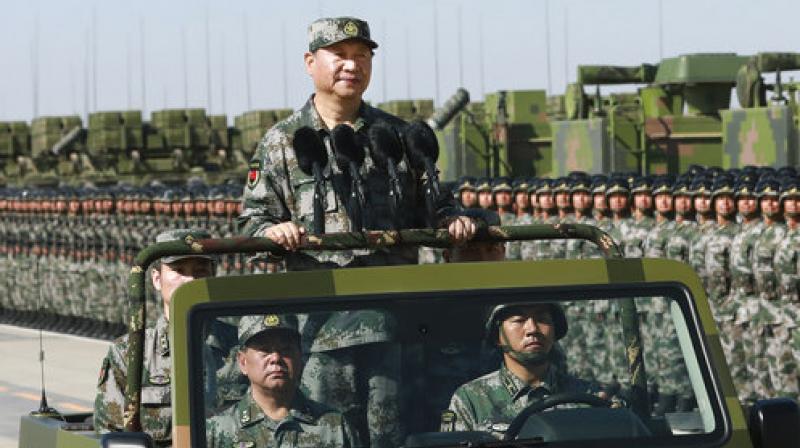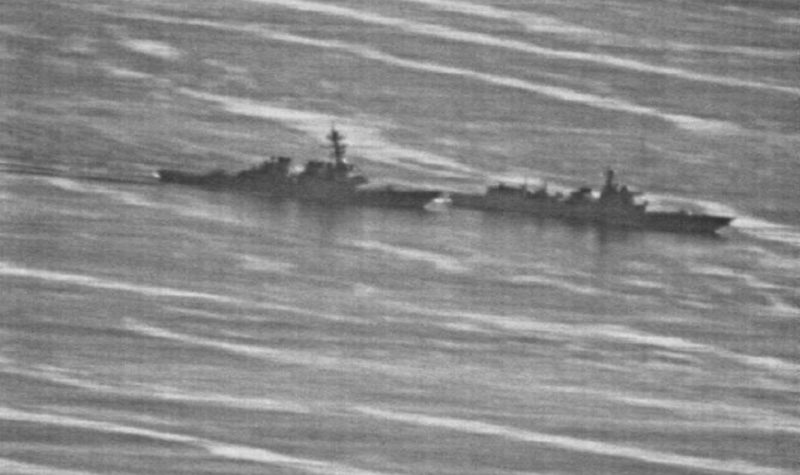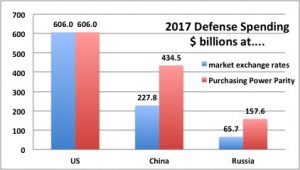By COLIN CLARK
 WASHINGTON: China is not ready to wage war far beyond the shores of Taiwan, but it is pressing hard to develop some advanced weapons and increasingly wants to project power beyond its shores with an increasingly capable military.
WASHINGTON: China is not ready to wage war far beyond the shores of Taiwan, but it is pressing hard to develop some advanced weapons and increasingly wants to project power beyond its shores with an increasingly capable military.
Those are the fundamental conclusions of the Defense Intelligence Agency in a unique report with its roots in the Cold War. Known as China Military Power, it was inspired by a similar enterprise known as the Soviet Military Power report, first published in 1981, which was translated into eight languages and distributed around the world.
The Pentagon released the report today, as well as a handy dandy video to ensure the report’s assessments get as wide a distribution as possible.
Today’s report leads with this quote:
The 2015 Chinese white paper China’s Military Strategy, issued by China’s State Council Information Office, states: “It is a Chinese Dream to achieve the great rejuvenation of the Chinese nation. The Chinese Dream is to make the country strong….Without a strong military, a country can neither be safe nor strong.”
While that might seem to set the stage for a harsh Cold War assessment of China’s rising military power, the result is markedly measured, especially to those who’ve followed these issues for some time.
For example, Dan Taylor, a senior DIA analyst, told reporters: “The PLA will acquire advanced fighter aircraft, modern naval vessels, missile systems, and space and cyberspace assets as it reorganizes and trains to address 21st century threats further from China’s shores.”
In fact, Taylor said, “China is rapidly building a robust lethal force with capabilities spanning the ground, air, maritime, space and information domains designed to table to impose its will in the regional and beyond.”
A senior defense official (yep, one of those) said China is “on the leading edge” of building fieldable hypersonic glide vehicles to attack ships, along with various missile systems.
This has been made possible by consistent and expansive defense spending. Beijing’s total military-related spending for 2018 probably exceeded $200 billion, a threefold increase since 2002. Chinese military spending increased by an average of 10 percent annually from 2000 to 2016. It has since gradually slowed to 5- to 7-percent growth during the past 2 years, the report says.
SOURCE: DoD 2019 budget submission, SIPRI database
But not all is rosy — from the Chinese pint of view — with other weapon systems. Many have pointed to the J-20 fighter, a stealthy looking aircraft that some compare to the F-35. As other defense officials have noted in the past, the Chinese have had “some issues with jet engines,” the senior official said. That means the PLA still have some challenges to get their systems up to the level they obviously are aiming for.
Combine that with China’s first foreign military base — “with a deployed company of Marines and equipment, and probable follow-on bases at other locations” — in Djibouti and you’ve got an historically inward-looking country, with a military focused on maintaining internal order and waging land wars, making a major shift. It “signals a turning point in the expansion of PLA operations in the Indian Ocean region and beyond,” the report drily notes.
But intent is the key when assessing another country’s military. What do they want to do with the weapons they are building?

The Chinese destroyer, Lanzhou, pulls in front of USS Decatur in the South China Sea. China claims much of the sea and the resources below, but the US, its allies, and an international tribunal have all rejected the Chinese claim.
“The biggest concern is that as a lot of these technologies mature, as their reorganization of their military comes into affect, as they become more proficient in their capabilities — our concern is they will reach a point where, internally, within their decision-making they will decide that using military for a regional conflict is something that is more imminent,” the senior defense official said.
Several times in his discussion with reporters, the senior defense official raised the worrying issue that the burgeoning Chinese forces, which the official noted have not fought a war in 40 years, might “miscalculate.” Given recent close brushes between the US Navy and PLAN ships, as well as China’s bellicose language whenever US or allied ships and planes perform perfectly legal close passes to areas China claims as its own, he may have a point.

No comments:
Post a Comment